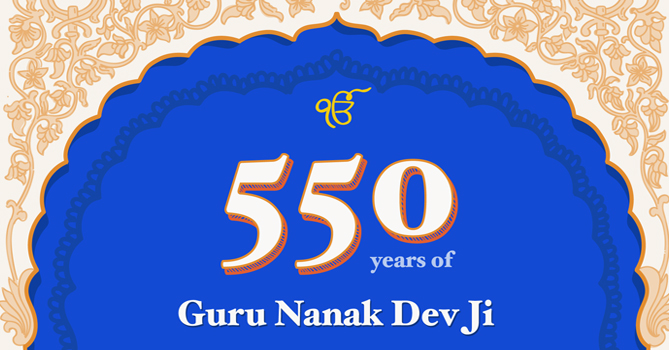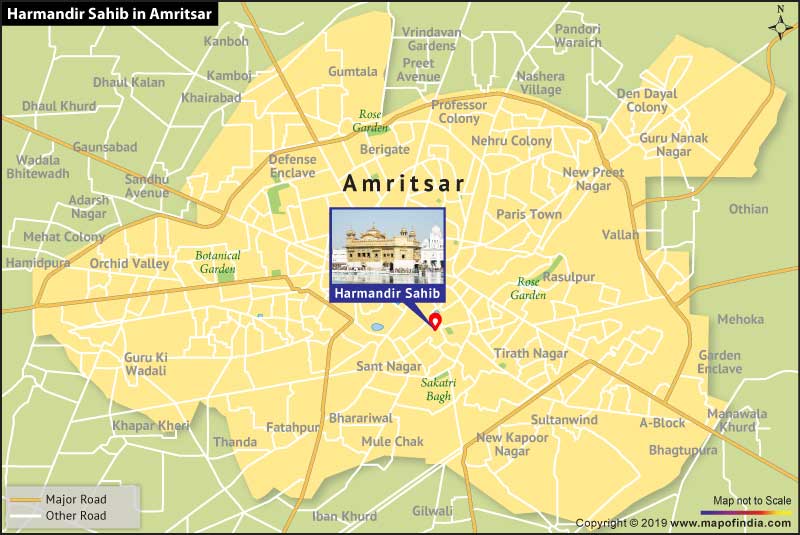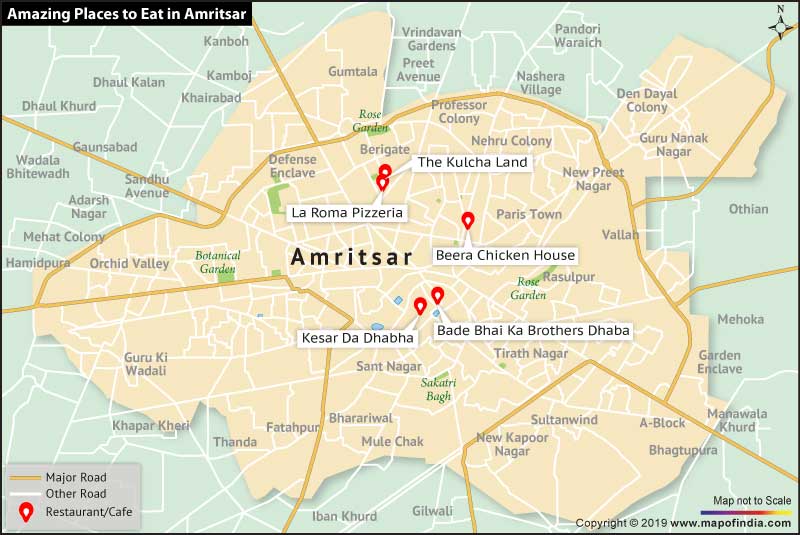

Guru Nanak Dev Ji, the first Guru and founder of Sikhism, was born in 1439 in Nankana Sahib in present-day Pakistan.
The Sri Guru Granth Sahib Ji is the Holy Book that captures and defines the principles of the Sikhi way of life – a path of truth, righteousness, and spirituality. It remains the guiding light and source of inspiration for all followers of the Sikh faith.
Is the Guru Granth Sahib a Book or a living Guru?
It is both.
Such is the reverence for the holy book, the 10th and last Sikh Guru, Sri Guru Gobind Singh in 1708, ordained that the Guru Granth Sahib be looked upon as the last living Guru and continue to live in perpetuity. While there are only 10 Gurus in the human form in Sikhism, the Guru Granth Sahib is viewed as the 11th living Guru.
What is inside the Guru Granth Sahib?
The Guru Granth Sahib is a compilation of prayers and hymns called Shabads. Spread over 1430 Angs (pages), the script is Gurumukhi – derived from Sanskrit, the ancient language of the Indian sub-continent.
Gurumukhi means “Word of God,” and reading and reciting the Shabads of the Guru Granth Sahib is repeating the divine message of the Almighty. A reminder to oneself to follow the teachings of the 10 Gurus.
The Shabads, spread over 1430 pages, are arranged in 31 Ragas – the melodic framework for composition and improvisation in Indian classical music.
Bhai Mardana and Bhai Bala, Guru Nanak’s first two disciples, would sing these Shabads and be soon joined by the congregation called Sangats.
After 20 years of extensive travelling, Guru Nanak settled down in Kartarpur in present-day Pakistan. Soon a pattern of the singing of hymns evolved.
Japji Sahib is the first prayer in the Guru Granth Sahib and refers to Jap – to chant or recite. Composed by Guru Nanak Dev, it captures the essence of the Sikhi philosophy. It is considered the most sacred Bani – the divine word, among all verses in the Holy Book and sung in the mornings.
The Opening words of Japji Sahib begins with:
“Ikoaʼnkār saṯ nām karṯā purakẖ nirbẖao nirvair akāl mūraṯ ajūnī saibẖaʼn gur parsāḏ.”
Ik Onkar – There is but One God
Satnaam – True is HIS name
Karta Purakh – God is the creator
Nirbhau – God is without fear
Nirvair – God is without enmity
Akal Moorat – God is immortal
Ajoonee – God is beyond birth
Saibhun(g) – God is from Himself, self-existent, and self-sufficient
Gur Prasaad Jap – HE is attained by the grace of true Guru. Recite HIS name
Guru Nanak emphasized the existence of One God. Through Japji Sahib, spread over 40 sections, Guru Nanak teaches the Supreme One is omnipresent and formless; holding infinite powers which are not seen, only felt. Guru Nanak shows the devout how to attain the highest levels of consciousness by reaching within one’s innermost consciousness.
By chanting HIS name and through sincere worship from within, as guided by the Guru, it is possible to connect with God.
The evening prayers
So Dar along with So Purakh are part of the Rehras and sung in the evenings.
So Dar or So Daru (compilation of 5 Shabads) is the second composition in the Guru Granth Sahib. So Purakh (collection of 4 Shabads) is the third.
Did Guru Nanak write the Guru Granth Sahib?
Yes, but not entirely. Guru Nanak wrote 974 Shabads, which form part of the Guru Granth Sahib. The first word of the Guru Granth Sahib is “Ik Onkar” – one and only Supreme Power and written by Guru Nanak.

Besides the teachings, how is the Guru Granth Sahib unique?
It is the only religious scripture in the world, drawing teachings from other religions including Hindu and Islam. It includes verses of divine saints from the lowest and most excluded social strata in society.
It is the only Holy Book to find maximum prominence in the sanctum sanctorum of the place of worship – the Darbar Hall, where it sits on a special covered pedestal under a sacred canopy. All worship is carried out in front of it.
Sri Guru Granth Sahib is the only Holy Book to receive recognition as a living person and offered obeisance.
Who were the other contributors to the Guru Granth Sahib?
Guru Nanak penned 974 Shabads, also known as Gurbani (Guru’s Divine Word). After his passing away, other Gurus also wrote shabads.
However, several verses written by non-Gurus were passed off as those written by Guru Nanak. There was a need to compile the authentic Gurbani into a standardized format, so all followers in times to come would have the opportunity to receive the authentic message of the divine Gurus.
With this aim in mind, Guru Arjan Dev Ji (1563 – 1606), the 5th of the ten Gurus, took it upon himself the task of collecting and compiling all authentic divine verses of the Gurus before him, into one Adi Granth.
Taking a cue for openness to wisdom and spiritual knowledge drawn from other religions by the previous Gurus, Guru Arjan welcomed the inclusion of divine verses composed by revered Hindu and Muslim saints.
The contributors included popular saints like Kabir Ji, Ravi Das Ji, Sheikh Farid, Naam Dev Ji, Trilochan Ji, among many others. It included respected saints belonging to the untouchable class, a major taboo at the time. The move increased Sri Guru Granth Sahib’s appeal and acceptance among members of all communities.
Guru Arjan Dev himself contributed 2218 hymns to the Adi Granth but left pages blank for subsequent Gurus to add at the appropriate time.
In its complete form, the Sri Guru Granth Sahib contains the teachings of 36 Saints, Sufis, and other mystics, including those of 6 Gurus of the Sikh faith, 15 Bhagats, 11 Bhatts, and 4 Gursikhs, all contained in 1430 Angs (pages).
The Adi Granth, later known as Sri Guru Granth Sahib Ji, was completed in 1604 and installed in the Sri Harmandir Sahib in the Golden Temple in Amritsar. It was to become the foundation of the Sikh faith.
The last and 10th Guru Gobind Singh added Shabads of the 9th Guru Teg Bahadur and deemed the Sri Guru Granth Sahib complete.
Who built Sri Harmandir Sahib or the Golden Temple in Amritsar?
The 4th Guru, Sri Ram Das Ji, founded the city of Amritsar (meaning the “Tank of Nectar of Immortality”) in 1577. It came up around the banks of a tank known as the Amrit Sarovar.
Guru Arjan was responsible for the design and building of Sri Harmandir Sahib Ji, which came up in the middle of the Amrit Sarovar. Sri Harmandir Sahib is also known as the Sri Darbar Sahib Ji or the Golden Temple in Amritsar, Punjab.

After the completion of Sri Harmandir Sahib, Sri Guru Granth Sahib Ji was installed there by Guru Arjan Dev.
After that, each day early in the morning, the Sri Guru Granth Sahib is devoutly carried by Sevadars (holy volunteers) in a procession from the Akal Takht, within the temple complex, to the Harmandir Sahib and is returned to the Akal Takht in the evening, in a similar procession.
The Sri Guru Granth Sahib Ji continues to be the source of divine inspiration to millions of followers around the world.
Did you know, Guru Arjan Dev was the first Sikh Guru to be martyred?
[Read: The Gurus and their Divine Teachings in Sri Guru Granth Sahib]




